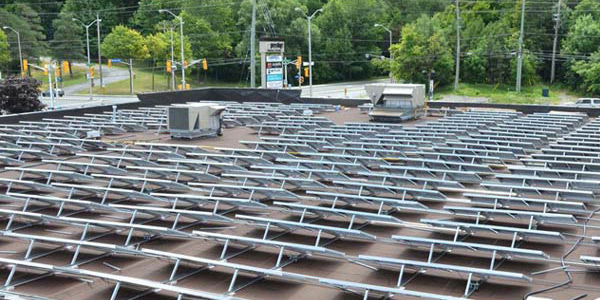By Christen Smith
The U.S. Department of Energy will collaborate with PJM to develop standards aimed at improving the integration of distributed energy resources onto the grid, the RTO announced Tuesday.
Under a new Cooperative Research and Development Agreement, Argonne National Laboratory will partner with PJM’s Distributed Energy Resource Ride-Through Task Force to study ride-through and trip guidelines from the Institute of Electrical and Electronics Engineers (IEEE) and adjust those rules to better serve PJM’s growing share of rooftop solar energy resources.
“Our primary mission is reliability, and we are preparing our system for the advent of more distributed energy resources so that we can seamlessly operate and understand DER behavior, both during normal operations and times of system stress,” said Chantal Hendrzak, executive director of Applied Innovation and Market Evolution for PJM.
“Our team has directly relevant experience in modeling and usage of simulation tools, and it has conducted similar analyses for the DOE and the North American Electric Reliability Corporation that can contribute to this joint effort,” said Ning Kang, an Argonne staff scientist who is leading the project with PJM.
The lab also sent Rojan Bhattarai to work on site with the task force. He will analyze regional data, develop power system models with DERs and help PJM stakeholders fine-tune DER operational settings to maintain optimum system reliability.
Before the widespread adoption of DERs, the grid was designed to handle one-way power flows, with energy moving from generating plants through the transmission system, before being stepped down to the distribution system and ultimately transmitted to end-use consumers. The growing volume generation coming off the distribution network is forcing grid operators to rethink the system to accommodate unconventional flows.
PJM said DERs — including solar, battery storage, combined heat and power plants and some wind turbines — currently function on settings designed to respond to unexpected system malfunctions that disrupt power flow. Some sources “ride-through” the event, providing much-needed reliability, while others “trip-off” to prevent system damage. Solar panels and other DERs also can’t tell the difference between a transmission fault and a distribution fault, causing inappropriate responses and overstressing the system.
“For transmission system faults, DERs should stay connected to maintain reliability, while for distribution system faults, DERs should stop producing as fast as possible to ensure safety and protection,” Bhattarai said.
But there’s a key problem: DERs can’t detect where a fault occurred.
“So the challenge for PJM and others is to find a middle ground and come up with one set of operating rules that can ensure DERs function properly for faults on both the transmission and distribution side.”
The IEEE last year updated its standard for voluntary DER interconnection (IEEE 1574-2018), which informs trip and ride-through settings, but — as PJM acknowledges — “offers a fair amount of leeway,” leading utilities to implement different required settings.
“The combined PJM-Argonne team will study the impact of DER trip and ride-through timing in the current IEEE standard to help PJM stakeholders reach a consensus on DER integration,” PJM said. “It will also inform the technical guidance that utilities and states can use to implement DERs across the region PJM serves.”



